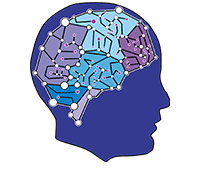Introduction
Brain-inspired Intelligence is a long term strategic scientific program proposed by Institute of Automation, Chinese Academy of Sciences (CASIA). It is based on the vision of the institute which emphasize the trend on the evolution from Automation to Information Technology, and ultimately to Intelligence Science. Brain-inspired Intelligence is the grand challenge for achieving Human-level Artificial Intelligence. The efforts on Brain-inspired Intelligence focus on understanding and simulating the cognitive brain at multiple scales as well as its applications to brain-inspired intelligent systems. The main research focus on Brain-inspired Intelligence includes but not limited to neural computation and cognitive brain modeling, neuromorphic computing systems, Brain-inspired information processing, and neural robotics.
The Research Center for Brain-inspired Intelligence (officially founded in April, 2015) contains three research groups, namely, the Cognitive Brain Modeling Group (founded in June, 2013, previously as Neural Computation Group), the Brain-inspired Information Processing Group, and the Neuro-robotics Group. The Research Center for Brain-inspired Intelligence is with participations from various Labs in this institute.
Cognitive Brain Modeling Group
The core effort of the Cognitive Brain Modeling Group is to simulate the cognitive brain at multiple scales to explore and understand how the brain works, as well as how to develop brain-inspired intelligent systems. CASIA Brain Simulation System simulates the cognitive brain from ions, neurons, neural micro-circuits and meso-circuits, all the way to brain regions, macro circuits and cognitive behaviors. The morphologies and the activities of the brain building blocks at multiple scales are acquired with different methodologies and equipments (such as ion channel and patch-clamp techniques, two-photon calcium imaging, fMRI, EEG, etc.) and synthesized from various sources at multiple scales, and simulation is strictly based on the observed data and principles. The long term goal of CASIA Brain Simulation effort is to decode the mechanisms and principles of human intelligence and develop Brain-inspired intelligent systems. Recently, the group has just established a cat V2 orientation selection simulation system and a mouse hippocampus simulation system. From the function point of view, the CASIA Brain simulator has already been able to perform object recognition, inductive reasoning, working memory, reinforcement learning and knowledge processing tasks. These tasks are executed based on the CASIA Brain simulator, which coordinates different simulated brain regions to achieve various cognitive abilities.
Brain-inspired Information Processing Group
The Brain-inspired Information Processing Group investigate on the next generation information processing theories, techniques, and applications inspired by the information processing principles from the brain. Its current goal is to build a Multi-modal Cognitive Machine with vision, audition, language processing, thinking capabilities. It has great potentials in the field of large-scale, multi-modal data and information processing.
The core task of Neuro-Robotics Group (NRG) is to do research and development on the next generation of intelligent robot system, by imitating and learning the mechanics of the human neural system. Currently, NRG is conducting the CASIA Motor Brain Project and studying the mechanics of conscious movement and subconscious movement simultaneously. Up to now, the basic model has been established and a hardware platform is being built to test and exhibit the results. A series of related papers have been published on IEEE Transactions, and NRG is invited by Frontiers in Computational Neuroscience to organize a special issue on this field.



